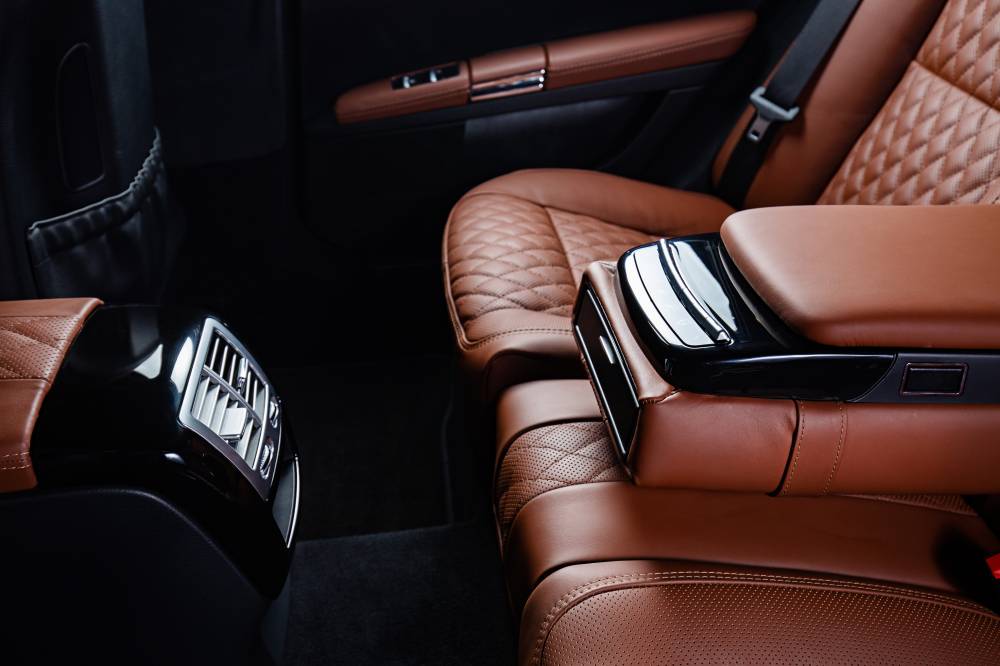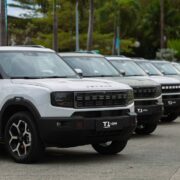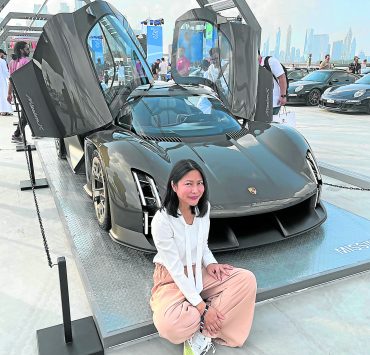Made in China: I am inevitable

Data from the China Association of Automobile Manufacturers revealed that in the first six months of 2023, China exported 2.32 million vehicles. This figure represents a 77% increase from last year’s time frame.
With those figures, China has officially overtaken Japan as the world’s top vehicle exporter. This accolade is on top of the Mainland being the biggest car market and vehicle manufacturing country.
With increasing global demand for electric and plug-in vehicles, which China is also the top manufacturer of, as it had a 160% increase in exports during the first half of 2023 versus last year, it would be safe to say that the world’s factory will add cars to its list of main exports.
The automotive industry is the most expansive and complex enterprise worldwide. And with China’s expertise in manufacturing, it has now set its eyes on the global market. And the Philippines is no exception.
With ASEAN countries on a growth streak, it is no surprise that China is training its sights on conquering its neighbors through economic means. Geopolitics aside, it is working as Chinese car brands are slowly gaining headway in markets known as bastions of Japanese brands. And here are 38 ways that China is doing it.
1. Unconventional design
Who would’ve thought Chinese car brands would outgrow their copycat ways from a decade ago and introduce some of the most striking car designs in recent years? Chinese car design is groundbreaking and trendsetting now with fresh, nonconformist looks that set it apart from Japanese, European, and American designs.
2. Improved build and quality
It’s hard to believe that we scoffed at China-made cars with their shabby build and questionable quality only a decade ago. Now, not so, as most Chinese car brands have stepped up their game to deliver solid finishes and consistent fitment.
3. High-end interiors

Faux leather interiors, panoramic sunroofs, ambient lighting, and quality accents used to be the domain of high-end German marques. Not anymore. Now, you can buy a base model China crossover with all those features as standard and then some.
4. Groundbreaking tech
Love them or hate them, large touchscreens and LCD instrument displays are now standard fare in most China-made vehicles. With menu and car setting functions embedded in the screens, Chinese brands have embraced the digital age with their cars.
5. Feature-rich
Aside from the usual high-end, formerly luxury, features trickling their way down to mass-market China cars, convenience items such as wireless charging, wireless Android Auto and Apple CarPlay, even USB-C ports from front to back, 360-degree cameras and self-parking are also becoming part of the usual China-car package. These features make them more attractive to consumers who want more value for their money.
6. BEV tech supremacy
China has undoubtedly led the way in Battery Electric Vehicle technology. From the most affordable EVs today, to some of the most complicated and expensive, China has them all. And they’re gearing up to export them, as well. So get ready.
7. ADAS
While most Japanese brands struggle to include any semblance of Advanced Driving Assistance Systems in their lineup, Chinese cars have these as standard already. And you don’t necessarily have to buy a top-of-the-line China car model to take advantage of ADAS features.
8. Improved materials


There was once a time when Chinese cars had the tackiest of interiors. But now, most modern Chinese car brands have mastered the art of tactile sensory satisfaction. While plastic is the de facto interior material, there is a more significant proportion of soft-to-the-touch surfaces where they matter most. Something the Japanese brands have taken for granted.
9. No more funky smell
If you check out modern Chinese cars made in the last five years, it would be safe to say that they no longer smell like petroleum-based plastics and adhesives. Yes, even how a car’s interior smells is part of the ownership experience nowadays.
10. Comfortable drive
Crashy suspensions were once the norm when we evaluated Chinese cars a few years ago. Now, they have equaled Japanese and some even European standards regarding riding comfort. Even Chinese car models with 19- or 20-inch wheels ride without harshness.
11. Excels in safety standards tests
The manufacturing facilities of Chery and BYD both have crash-testing setups. So it’s no wonder that models from both already have five-star ratings from various New Car Assessment bodies. It says a lot about the standards of safety these and other China brands now adhere to.
12. More-than-decent performance
China cars mostly come with a 1.5-liter engine by default. While Philippine tax laws may have mandated the displacement of Chinese vehicles, most hardly fall short of performance and efficiency expectations. With their engines mated to either dual-clutch or continuously variable transmissions, Chinese cars hardly disappoint nowadays.
13. Price advantage
It’s hard to ignore that most Chinese cars today are priced significantly lower than equivalent Japanese models. Plus, they are mostly better equipped than the Japanese cars, too. For a price-sensitive market like the Philippines, this is a crucial edge.
14. Value for money
Related to the previous point, the value-for-money proposition China-made cars bring to the table has undoubtedly swayed many Filipino car buyers to their favor in the last five years. Who doesn’t want to get more car for their money?
15. Improved distributors
Chinese car brands have been maligned years ago for having mom-and-pop distributors. Here today and gone tomorrow was the norm, leaving Chinese cars orphaned and owners disappointed to the point they swore off ever buying a Chinese car. But with experienced distributors such as TCCCI, Sojitz, Ayala, global players Astara and Inchcape hopping onto the China-car bandwagon, and even Chinese subsidiaries of Omoda and Jaecoo and SAIC setting up shop, consumers can expect more quality service and a more fulfilling ownership experience.
16. Refined ownership experience

With new distributors in play, the China car-buying experience has also leveled up. With the preponderance of sales promotions, car loan access, and a similar sales and handover experience as a typical Japanese car brand dealership, the whole China car ownership experience has improved leaps and bounds from just a decade ago.
17. Focus on parts availability
The Geely debacle aside, Chinese car brands and their distributors now have a newfound focus on after-sales and parts availability. Or at least they are trying to. While spare parts shortage issues are an industry-wide phenomenon, it is refreshing for many Chinese brands to declare their intention to stock a modest parts inventory for improved repair times and customer satisfaction.
18. Ex-Japanese brand executives are jumping ship
This past year has seen so much movement in the local automotive industry. With former Japanese car brand executives moving to Chinese car brands and assuming key sales, marketing, after-sales, and business development roles, it is clear that they consider these brands viable and worth staking their careers for.
19. Embedded themselves in local operations
Curiously, Chinese car brands operating in the country have a Chinese “Country Director,” or a Chinese expat who oversees the whole operation for the brand, embedded in their plantilla. They learn as much from the Filipinos as the locals benefit from the brands’ presence. It also shows how serious the Chinese brands are with their presence in the country.
20. Aggressive expansion
On a recent trip to the Omoda and Jaecoo Wuhu headquarters, one of the company employees we talked to recounted how many of them were chosen for their jobs. According to the employee, speaking fluent English was one of the essential prerequisites to getting hired. Chinese car brands are looking at expanding their presence in international markets. And with Chinese car exports hitting a high this year, ensuring smooth operations in other countries they operate in, is paramount to getting a more significant market share.
21. A brand for every need
If you’re confused with the number of Chinese car brands sprouting out of nowhere, take comfort that these are mere segmentation exercises by their parent companies. Seeing how younger consumers are becoming more individualistic with their car choices, Chinese carmakers are creating sub-brands catering to specific consumer wants and needs. One sub-brand could have more mass-market appeal and pricing, while another could focus on luxury and performance. Amazingly, models from each sub-brand share the same chassis architecture, drivetrains, and powertrains.
22. Willing to take risks
Chinese carmakers have to think out of the box if they want to disrupt the Japanese establishment. Left-field designs combined with more features and matching lower prices are just some of the tactics Chinese brands have employed to get a foothold in various markets.
23. Unafraid to spend
There’s a quote in business that goes, “You have to spend money, to make money.” The Chinese know this all too well. Aside from spending millions of dollars setting up subsidiaries in the countries they are present in, they also generously subsidize local distributors’ sales and marketing budgets. We can’t say the same for some Japanese brands, however. Look who’s getting noticed now.
24. Listens to customers
The recent Chery User Conference revealed one of the critical practices the brand is implementing in various markets: how they listen to their customers. It goes beyond surveys, as they invite Chery owners to events and even trips to their headquarters in Wuhu, China. They get to interact with the company’s top brass, too. These experiences foster loyalty and reinforce the owners’ decision that they made the right choice.
25. Faster implementation of changes and updates
Through direct user interaction, Chery, for example, was able to implement improvements to their cars in a very short time. This improved customer satisfaction and sales performance, too. So, engaging with customers beyond market surveys and knowing their wants and needs helps.
26. Forward-thinking
Chinese car brands are not resting on their laurels despite their relative success. Brands like Chery are already studying how car ownership will be in the future. For example, it is now rolling out car rental and used-car businesses in various markets to supplement its new-car sales. It is anticipating how global markets will pan out in the future. And it is not alone in China with this way of thinking.
27. Anticipates trends
Nothing demonstrates this better than the Chinese dominance of Battery Electric Vehicle technology. But this is just the start, as many Chinese carmakers are already making headway in autonomous driving technology with actual production models plying China’s roads and available for sale now. They also spend R&D money on creating proprietary operating systems for their cars and developing new technologies for future mobility applications. BYD, for example, is also investing in electric trains and buses as it anticipates the need for mass transport solutions in the years to come.
28. China is the manufacturing plant of the world
With the country’s manufacturing might, the turnover of products and product improvements from design to actual production is quick. This agile process lets Chinese car companies churn out improvements in design and engineering at a rapid pace. It’s faster even than most Japanese car companies at that.
29. “Sharing” their tech
How times have changed. Four decades ago, Western car companies had to enter joint-venture agreements with local Chinese companies to be able to sell in the Mainland. Chinese car companies are selling their products, technologies, and processes to help lower manufacturing costs for Western brands as EVs begin to disrupt traditional ICE markets.
30. Chinese Government support
The government’s hold on the Chinese economy is no more evident than in the automotive industry as state-owned companies make headway in export markets. Government subsidies and foresight into New Energy Vehicles have given Chinese car companies a head start in the global EV race. This is what happens when a State has goals and will do anything to achieve them.
31. Playing the long game
You would think that a civilization that’s been around for 7000 years would know how to play the game of trade and business. Well, Chinese car companies are no strangers to being patient when establishing a foothold in the market. Selling cheap now and reaping the benefits later still holds.
32. Prepared for it decades ago
The Chinese have built an automotive manufacturing empire not by chance but by deliberate government planning. From joint ventures to technology transfers and trial and error, the Chinese have reached parity with global auto manufacturers in 40 years. Chinese car makers have become innovators by adopting and improving technology in their cars. As a result, the Chinese government has ended the requirement for joint ventures.
33. Lured Western talent
Car designers, engineers, and even upper management were either poached or recruited from Western car companies by Chinese car makers to make their cars globally appealing and competitive. And this has been going on for more than a decade. And it’s not as if it is a frowned-upon practice; remember Kia’s Peter Schreyer?
34. Bought into Western car brands
If the Chinese did something that the Japanese and Koreans didn’t do in their march towards global car manufacturing, they bought Western car brands and suppliers. They benefited from their brand equity and technology. MG with SAIC and Volvo and Lotus with Geely are just some familiar examples. The Chinese own Pirelli, too, by the way.
35. Adopted Western practices and standards
One of the critical benefits of joint venture agreements for the Chinese was the way local partners could use technology and manufacturing processes employed by their Western partners. And it’s not just the tooling and the way of doing things but also the adoption of higher standards of quality that are needed to play in global markets.
36. Makes everything cheaper
One of the critical advantages of Chinese manufacturing is the ability to scale up and do so in the least possible time. By making things in bulk, it can drive down prices. By controlling the supply chain, it can lower the cost of production. They also know where to save and wher
interior material, there is a more significant proportion of soft-to-the-touch surfaces where they matter most. Something the Japanese brands have taken for granted.
37. Produces according to customer wants
It is ironic how a Communist country can adopt Western capitalist ideals and make them work to their advantage. That’s just how Chinese car companies now work. By creating products people want to buy, they have ensured markets for themselves. Do customers want to go off-roading? Here’s a 4×4 EV for you. Is there a need for a cheap daily commuter? Mini EVs are the answer. Make enough of them, and they end up being exported.
38. They learned their lessons
Chinese cars were just nasty 10 or 15 years ago. But guess what? Chinese carmakers have realized that to compete globally, they must adhere to global market standards. From design to quality, performance, and even safety, Chinese car brands have addressed each expectation with their latest generation of products. And it can only get better from hereon.























